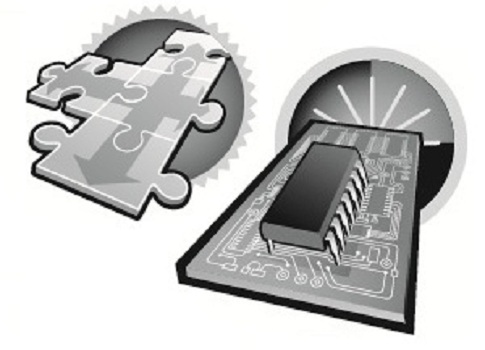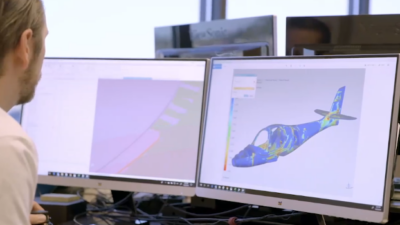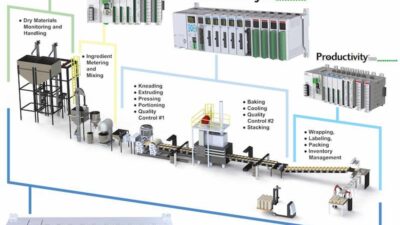Engineering and IT Insight: Justify investing in and applying new technology by explaining four main benefits: R is for revolutionary benefit, A for avoidance, V for visionary, and E for enhancement (RAVE). Listing all expected benefits will help determine if the change is worth the cost.

Justifying changes can be difficult, especially for projects using information technology in manufacturing. Many of the benefits from applying IT solutions to manufacturing operations are indirect and hard to accurately estimate or measure. One way to justify applying new technology is to use the RAVE approach. There are four main reasons for changing: R for a revolutionary benefit, A for an avoidance benefit, V for a visionary benefit, and E for an enhancement benefit. The following explanations appear in order of commonality.
1. Avoidance benefits
One of the most common reasons for implementing IT in manufacturing is avoidance of costs or defects. Avoidance occurs when there are activities that you currently do, that you do not want to do, and new technology can let you avoid them. Examples of avoidance benefits could be reduced paperwork and sign-offs as a result of an electronic instruction system and elimination of manual inspections through the installation of an automated vision inspection system. Other avoidance benefits could be eliminating reconfiguration and validation of multiple independent systems when equipment is changed by installing an advanced controller and eliminating the configuration of basic control and advanced control in different system using different tools. New systems with improved sensing capabilities and control algorithms may also reduce defects, avoiding rework costs and reducing scrapping costs.
Avoidance benefits are often the easiest to estimate, easiest to quickly measure, and the easiest to justify. However, when using avoidance as the reason for a project, it is important to actually measure the costs before and after the implementation. Many IT projects have been justified using avoidance, but when the true cost of implementation and potential increased support is added, the avoidance benefits disappear. Many executives complain that if all of the cost avoidance projects were implemented, then production would be free, so you have to have real numbers available to justify a change based on avoidance benefits.
2. Enhancement benefits
Enhancement benefits come when a changed system delivers the ability to do things you currently do, that you want to continue to do, and to do them more efficiently or effectively. Examples of enhancement benefits are better human-machine interface (HMI) displays that enhance visibility into the process, the ability to increase throughput using an updated control system, and improved historian report access through new servers and faster disks. Enhancement projects that increase safety or reduce unexpected shutdowns can provide measurable benefits, but other enhancement projects can be hard to justify because the value gained can be difficult to measure. What is the value of enhanced visibility into the process that prevents a shutdown or accident? That is a value that is difficult to prove or measure, so enhancement projects are often relegated to the bottom of the project list.
3. Visionary benefits
Visionary benefits come from changes that give you the ability to do something you currently do not do, know that you could do, and that you want to do. Examples of visionary benefits are device failure predictions with a modern fieldbus network, automated procedure control using a batch or MES system, automated labeling of all products with new printing and engraving systems, and handheld displays that allow operational staff instant access to all production information regardless of location. Visionary changes often occur when you look at other companies in your industry and other industries, and see them doing things with IT that you don’t do today. They had a vision to use IT and have proven that implementations can bring benefits. Benefits from visionary changes can often be estimated using benchmarks and comparisons to other companies. Visionary benefits are usually easier to justify than enhancements, because you can reference advantages that your competitors have using new technologies.
4. Revolutionary change
A final reason for making a change can be the extraordinary benefits derived from a revolutionary change. A revolutionary change occurs when there are activities you currently don’t do, you want to do, and you were not even aware were possible with new technologies.
For example, revolutionary changes could be self-learning systems that learn how to respond to upsets and failures, virtual reality systems using robots to monitor hazardous areas, heads-up displays in safety goggles that overlay maintenance information, operator instructions, and equipment status on whatever device an operator is looking at, or 3D printing integrated into your production lines for personalized products.
Revolutionary change requires you to expand thinking beyond just incremental improvements and take a hard look at the entire production chain. The production chain is all of the activities that are performed to produce a product, including all primary and secondary activities, testing activities, quality assurance activities, packaging activities, inventory movement activities, and maintenance activities. Revolutionary changes occur when entire links in your production chain can be removed. They are the hardest changes to justify because they break with tradition and may force changes on groups not willing to change. However, revolutionary changes can also have the greatest benefit.
When considering a new manufacturing IT project, look for the benefits to occur in more than one area. Consider the replacement of an obsolete DCS system with a modern one. This project may bring benefits by avoidance of shutdowns due to aging hardware, enhancements for operational staff, visionary changes by procedure automation and smart devices, and revolutionary changes in the ability to run high-speed and on-line global optimization processes. Another example is replacement of a server farm with a small set of virtualized servers. This project may bring avoidance benefits by reducing upgrade costs, enhancement benefits by better server management, and visionary benefits by allowing online updates and upgrades.
Remember the RAVE acronym when calculating benefits: revolutionary benefits, avoidance benefits, visionary benefits, and enhancement benefits. Listing all of the expected benefits will help determine if the change is worth the cost.
– Dennis Brandl is president of BR&L Consulting in Cary, N.C., www.brlconsulting.com. His firm focuses on manufacturing IT. Edited by Mark T. Hoske, content manager, CFE Media, Control Engineering and Plant Engineering, [email protected].
ONLINE extra
This posted version contains more information than the print / digital edition issue of Control Engineering.
At www.controleng.com, search Brandl for more on related topics.
See other articles for 2013 at www.controleng.com/archive.
See other Manufacturing IT articles.


